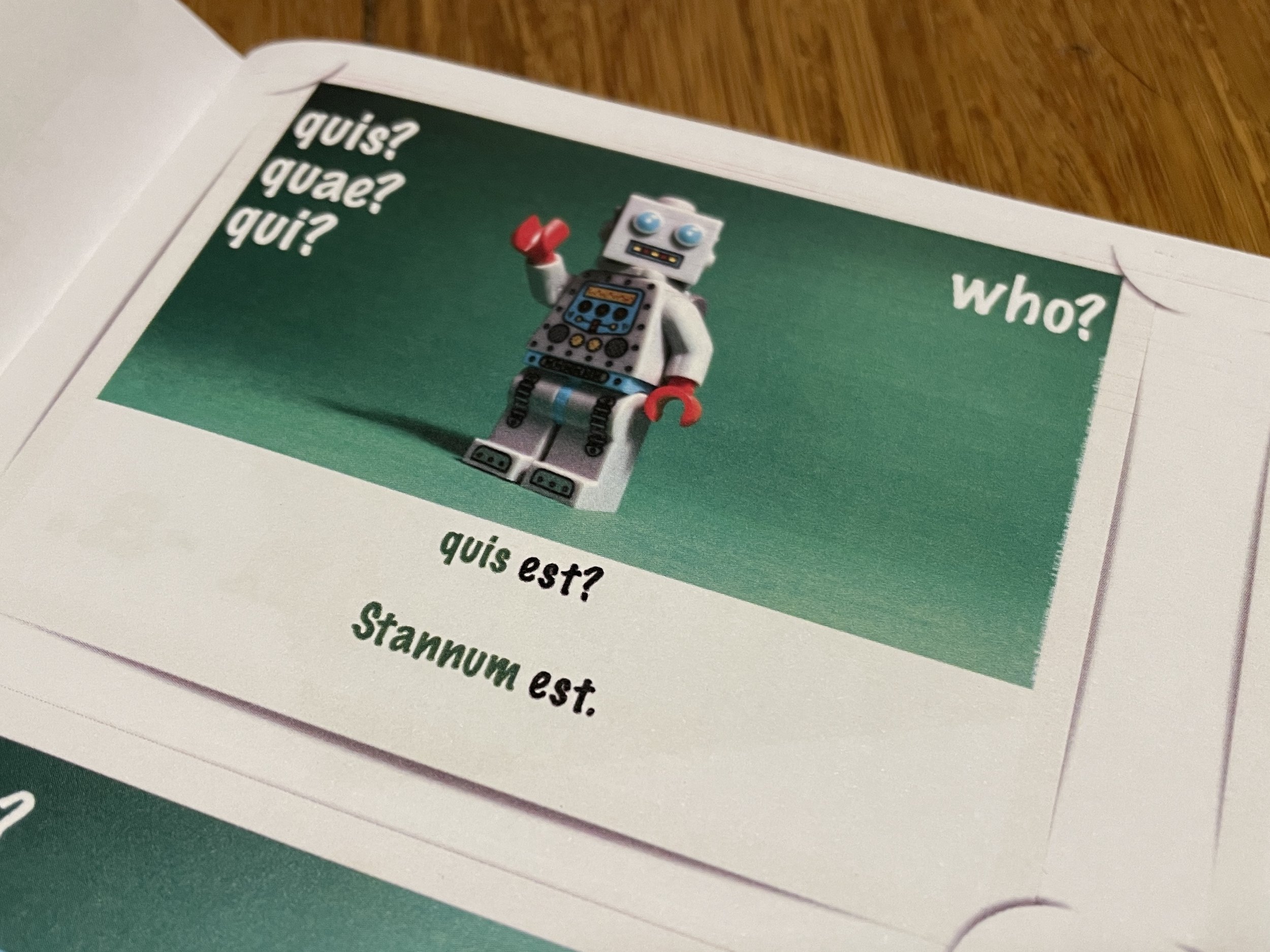Salvēte, sodālēs.
Capitulum Secundum, lines 15-24 introduces four new words, quis, quae, quī and līberī.
Quis, quae and quī all mean ‘who’ and can be found on page 8 of Handy Latin Tables Pars Prīma, along with the other question words introduced in Chapters 1-5.
from Handy Latin Tables Pars Prīma, page 8.
Why are there three words meaning ‘who’? Quis is for males : Quis est Mārcus? Quis est pater Mārcī? Quae is for females : Quae est Iūlia? Quae est māter Mārcī? Quī is for asking about more than one person, as long as at least one of them is male : Quī sunt Iūlia et Mārcus? Quī sunt līberī Aemiliae? (Note: Quae can also be used for asking about a group that is entirely female, but you won’t see that just yet).
Speaking of līberī, Lingua Latīna Per Sē Illustrāta does something extremely useful here, which it will do more and more frequently as you progress through the book: It defines the word līberī for you IN LATIN! On lines 21-22 it says Līberī sunt fīliī fīliaeque. (As this is only the second time you’ve met -que, I’ll remind you that this means the same as Līberī sunt fīliī et fīliae.)
Enough from me, enjoy lines 15-24.
Lingua Latīna Per Sē Illustrāta : Capitulum Secundum : lines 15-24. To be fair to the publisher, after Capitulum Secundum extracts will not be given - you will need a copy of the textbook of your own.
Satis est! See you soon.


